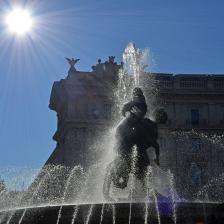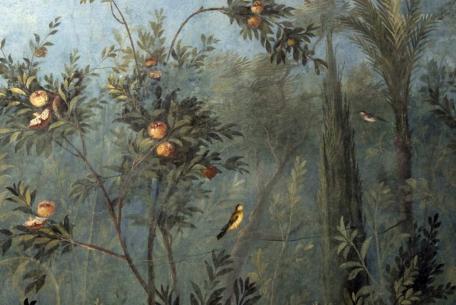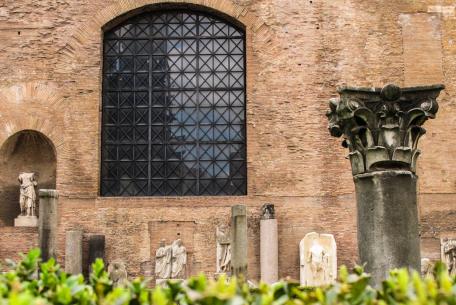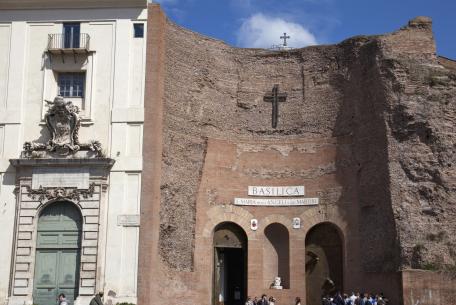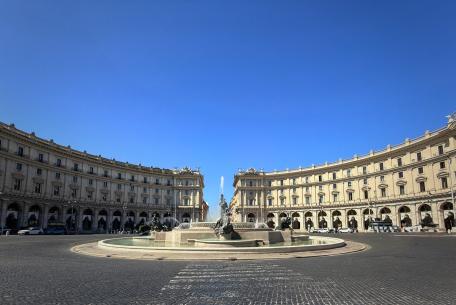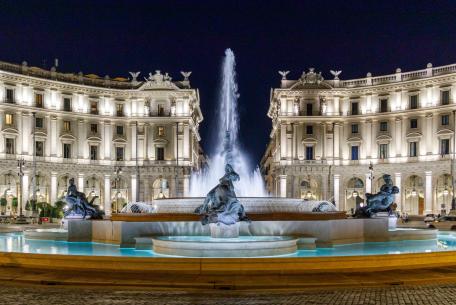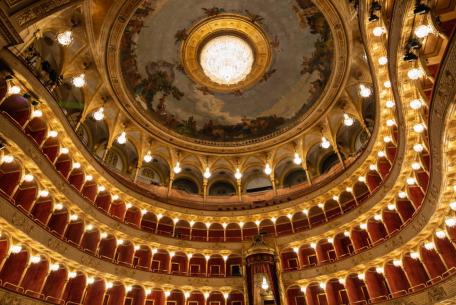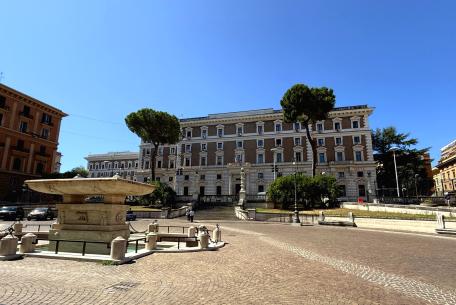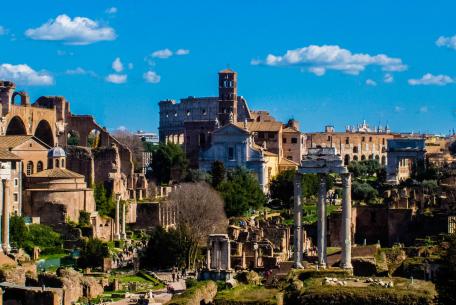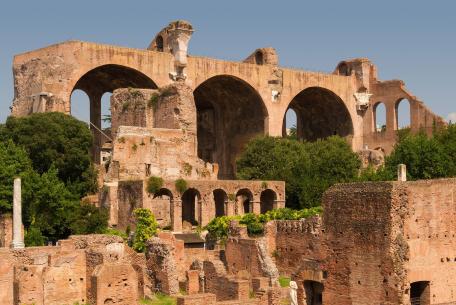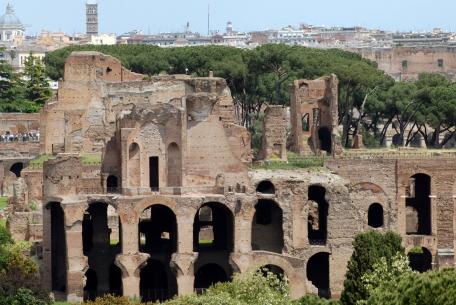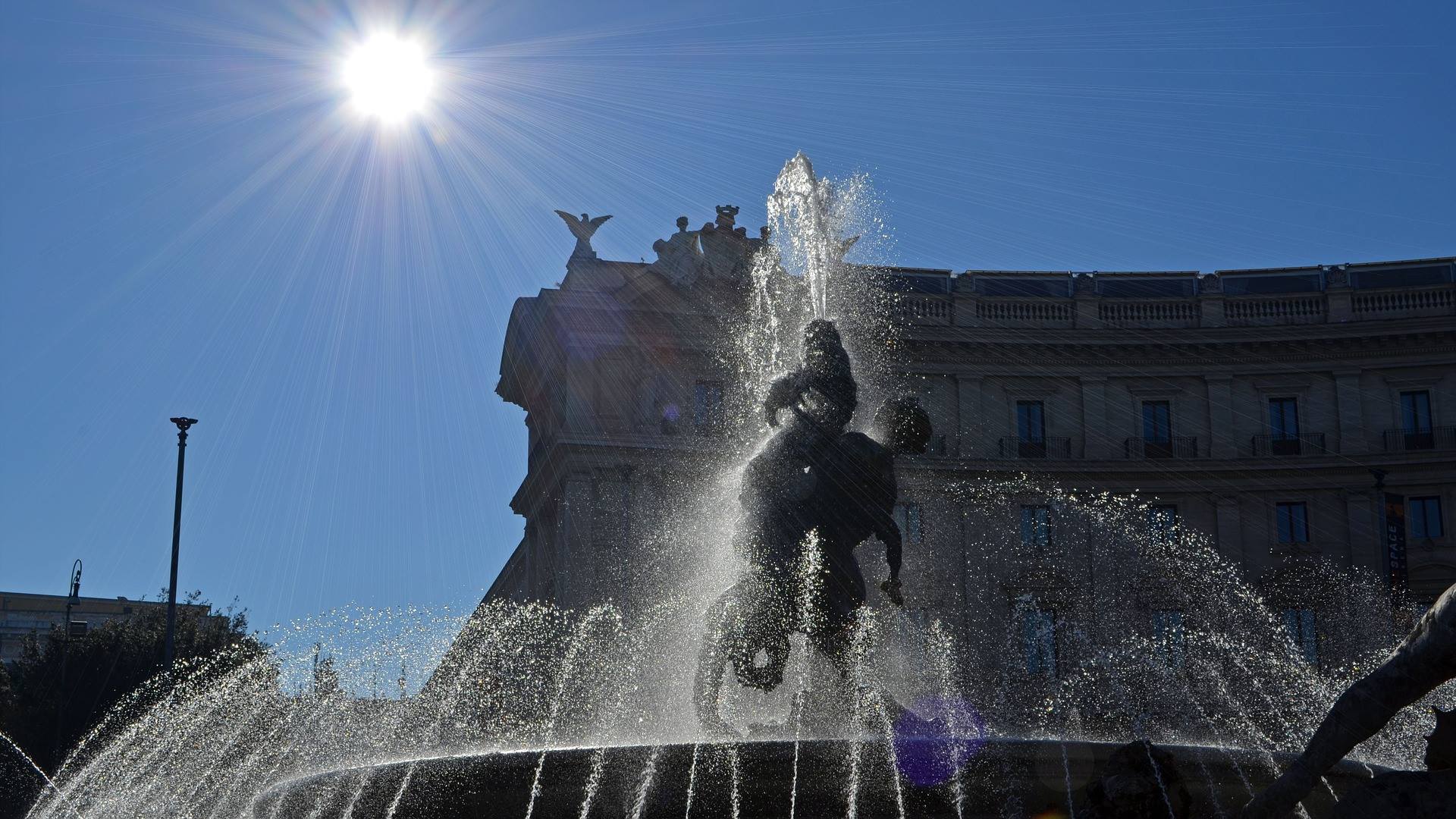
Walking can be a way of life but it is, above all, the best way to get to know a city and discover details of beauty, all you need is going around with curious and attentive eyes. The itinerary we propose you crosses three of the seven hills on which the city was founded, the Viminale, the Esquiline and the Quirinal, and ends in the valley of the Forum, at the foot of the Palatine hill where everything began according to myths and legends. A journey through time among imposing monuments, works of art and buildings that are clear evidence of the history of the city over the centuries, from the Rome of the Kings to the Unification of Italy.
The itinerary starts from Termini Station, where you can see the remains of the Servian Walls, the oldest defensive walls in the city of Rome, attributed to King Servius Tullius, hence the name. The first construction was from the 6th century BC, but most of which is still visible dates back to the reconstruction of the 4th century BC, carried out after the great sack of Rome by the Gauls.
On the square in front of the station, Palazzo Massimo is one of the four seats of the Museo Nazionale Romano, and includes masterpieces of Roman sculpture and a remarkable collection of mosaics and ancient frescoes.
From Piazza dei Cinquecento, you can see the imposing remains of the Baths of Diocletian, the largest of ancient Rome's: built between 298 and 306 AD, they could accommodate about 3,000 people at the same time. Part of the baths was converted into a church by Michelangelo in the years 1563-64, almost at the end of its long life. Access to the Basilica of Santa Maria degli Angeli is from Piazza della Repubblica. The square, designed by architect Koch, takes up the ancient semi-circular shape of the stadium for athletic competitions, which was part of the ancient thermal baths. The Romans still call the square “Esedra”, with its former name. In the center, there is the beautiful Fountain of the Naiads, with sculptures by Mario Rutelli (1870), which at the time caused a stir for the reclining position of the sea nymphs.
Going down Via del Viminale, you pass in front of the Opera House, built at the end of the nineteenth century and completed by the architect Piacentini in the 1920s. Viminale is the name of one of the seven hills of Rome and of the building that houses the Ministry of the Interior.
A few steps away, Santa Pudenziana is one of the oldest churches in Rome, dating back to the 4th century, and built on the house where, according to tradition, St. Peter arrived in Rome and was hosted by the Senator Pudens.
The walk continues through the Rione Monti, which takes its name from the Viminale, Quirinale and Esquilino hills. It was inhabited since Roman times with the name Suburra. In the streets and squares, there are trattorias offering traditional cuisine and artisan shops. Along the way, along the Via Urbana and Via Leonina, the Church of San Lorenzo in Fonte, built in the place where, according to tradition, St. Lawrence was held prisoner before its martyrdom.
Piazza Santa Maria dei Monti takes its name from the church of the same name: it is a lively square and a meeting place for residents and tourists. The church dedicated to the holy martyrs Sergius and Bacchus was recently entrusted to the Ukrainian Catholics of Byzantine cult.
The Torre dei Conti is an imposing tower built in the Middle Ages on the remains of the Forum of Peace, built by the Emperor Vespasian.
We then arrive at the monumental and political center of ancient Rome. Via dei Fori Imperiali, built following the demolition of the 1930s, shows the imposing remains of Rome, from the centuries when it was a Republic to when it became the capital of the Roman Empire. Along the way, the Forums of Augustus, Trajan, Caesar, the Basilica of Maxentius, the Republican Forum, the oldest political center of ancient Rome, the cradle of Western civilization and its institutions.
 Condividi
Condividi












































